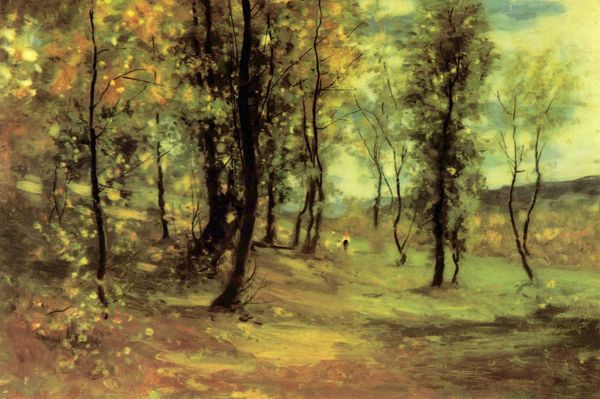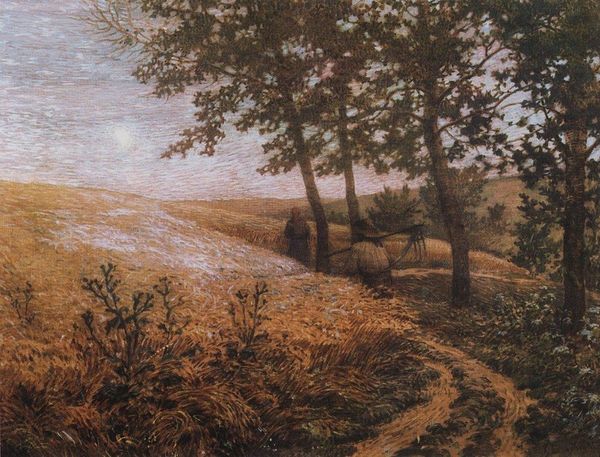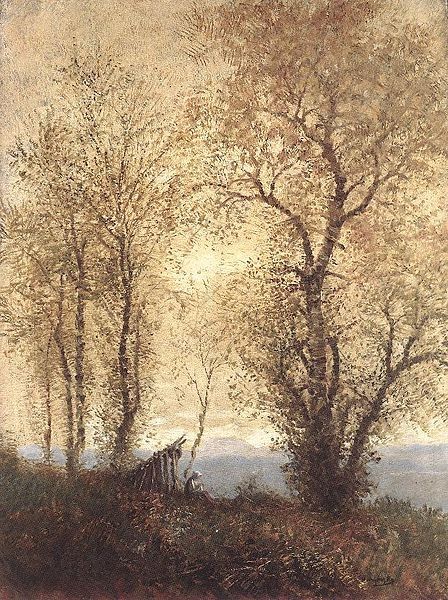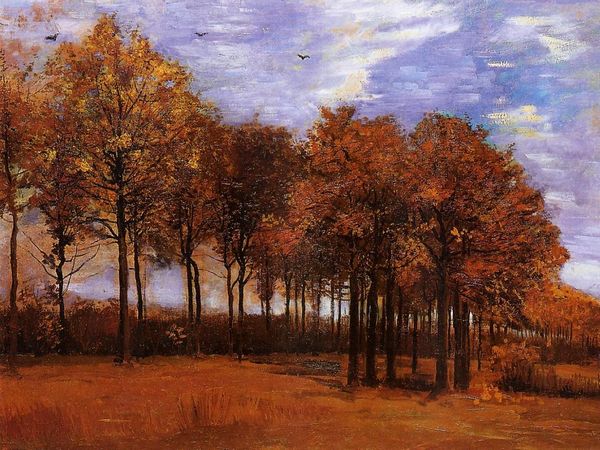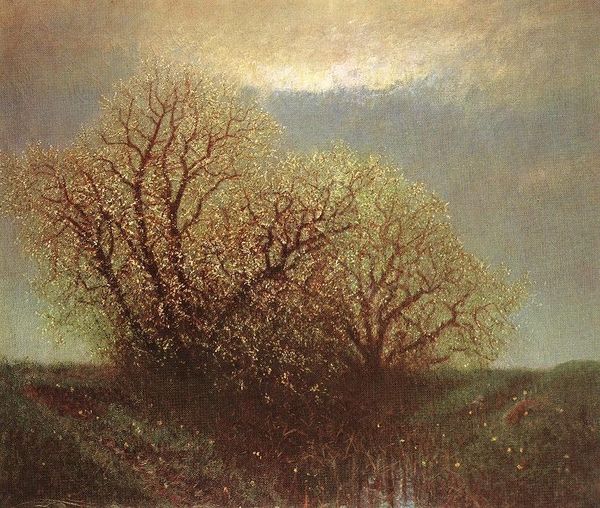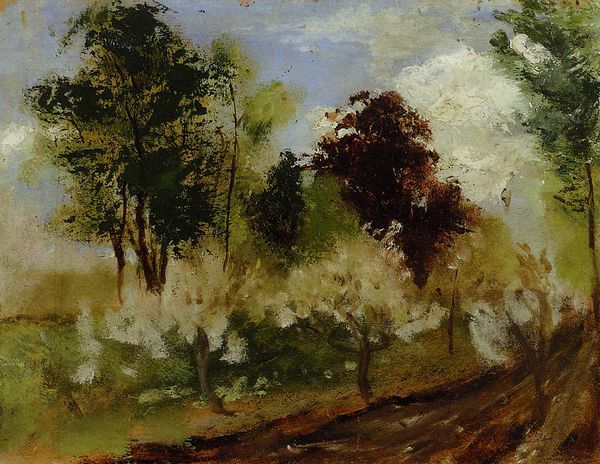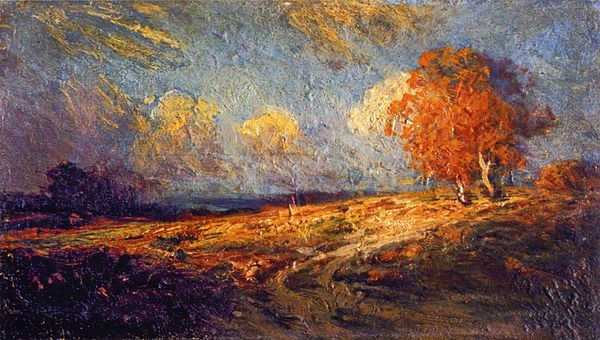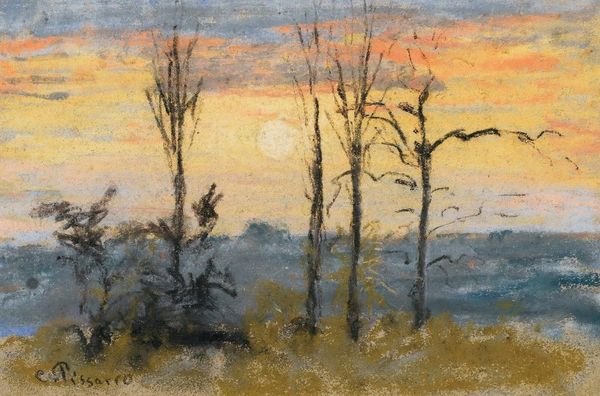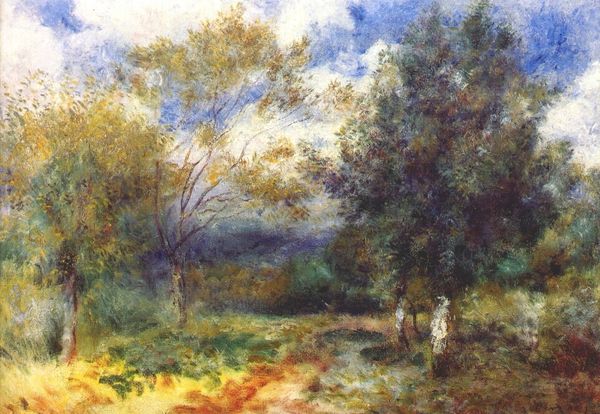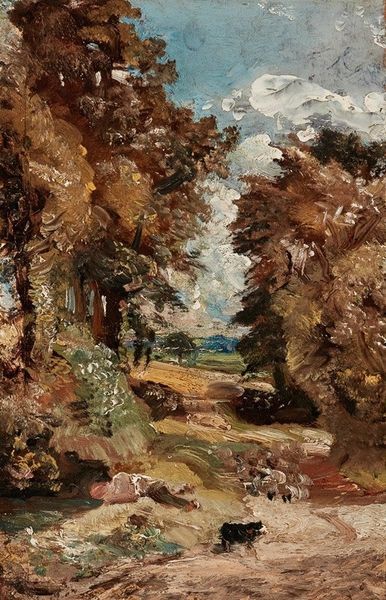
Copyright: Public domain
Editor: We’re looking at "Under the Cross," an oil painting from 1892 by László Mednyánszky. The muted tones create a very melancholic mood. There is such rawness and vulnerability in its landscape, so desolate yet alive. How do you interpret this work? Curator: The immediate aspect that strikes me is the composition. Notice how the verticality of the trees and cross sharply contrasts with the implied horizontal line of the horizon. Mednyánszky uses this stark dichotomy to create a sense of unease and tension. Are you drawn to any particular section of the piece? Editor: I'm really stuck on how dark the tree trunks are versus the ethereal background colors and wispy branches, like, that the artist didn’t use a ton of detail in either. It’s such a high contrast look overall. Curator: Precisely. The limited color palette is crucial. The contrast between the dark earth tones and the pale blues and yellows constructs a visual metaphor. Does this metaphorical interplay evoke particular feelings in you? Editor: It kind of does. To me, it has such sad elements that blend perfectly. But I find that I enjoy art that lets you feel emotions even if you’re not entirely sure what to think about it at first, if that makes sense. Curator: Your perception is quite insightful. Indeed, it is the tension between despair and hope—encapsulated in these stark juxtapositions—that speaks profoundly. This piece showcases Mednyánszky’s skillful control over color and form to convey a powerful emotional impact. It serves as an excellent case study of the symbiosis between medium and message. Editor: That’s really useful to keep in mind going forward, thinking of emotional impact on the whole! Thanks so much! Curator: My pleasure. Approaching artwork through a critical lens provides an enriching experience that broadens our own awareness.
Comments
No comments
Be the first to comment and join the conversation on the ultimate creative platform.

